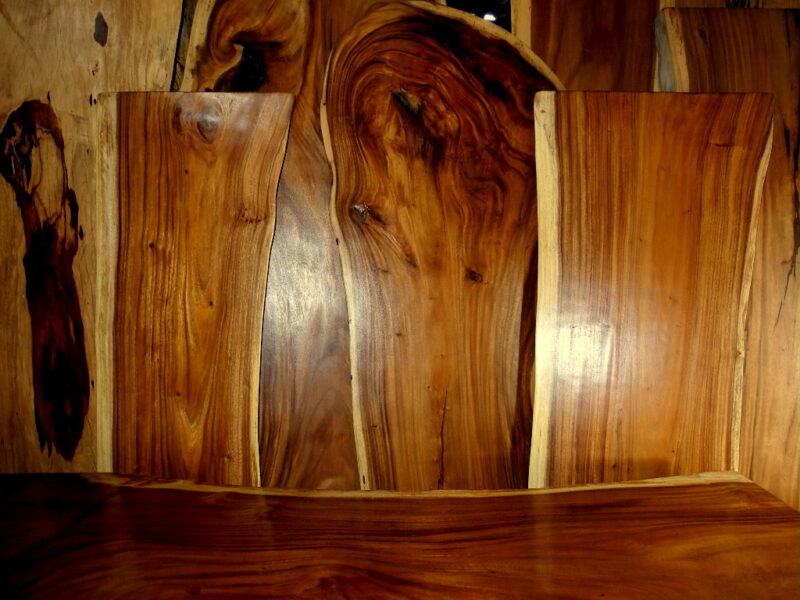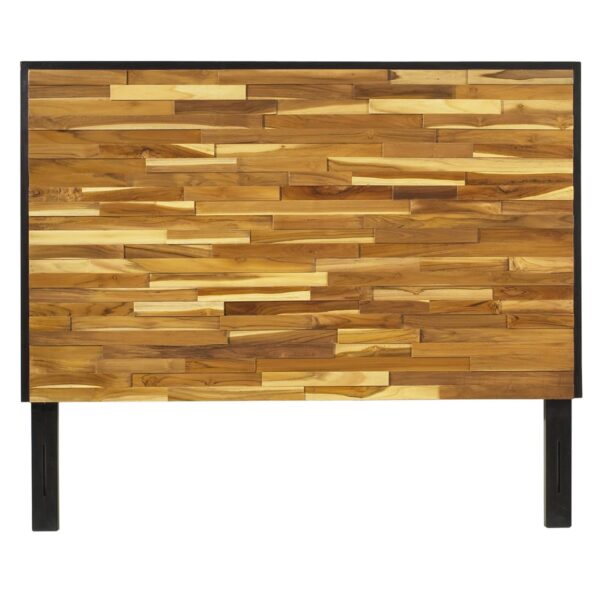Reclaimed wood furniture has emerged as a major trend in eco-friendly home decor, with its sustainability, aesthetic appeal, and unique historical character taking the spotlight. As environmental consciousness grows, both homeowners and interior designers are increasingly opting for materials that not only enhance the beauty of living spaces but also promote sustainable practices. Reclaimed wood furniture is a shining example of such materials, capturing the attention of eco-conscious consumers and design enthusiasts alike.

At its core, reclaimed wood furniture is crafted from repurposed wood sourced from old buildings, barns, and other structures. This reduces the need for new timber and helps conserve forests. By utilizing wood that might otherwise end up in landfills, reclaimed wood furniture significantly lowers the carbon footprint associated with furniture production. This remarkable practice not only combats deforestation but also supports biodiversity preservation and reduces methane emissions from decomposing wood.
The environmental impact of reclaimed wood extends further by minimizing the energy required to process new timber, contributing to a more sustainable furniture industry. Estimates suggest that using reclaimed wood can conserve up to 17 trees per ton of reused wood, highlighting its crucial role in preserving natural resources. For those seeking innovative ways to incorporate sustainable materials into their homes, exploring recycled interiors is an excellent option.

One of the standout features of reclaimed wood furniture is its unparalleled aesthetic appeal. Each piece carries a rich history, featuring natural weathering, distinctive marks, nail holes, and grain patterns that add character and authenticity to the furniture. The aged patina of reclaimed wood enhances its visual appeal, making it a popular choice for adding rustic charm and warmth to interiors.
Reclaimed wood can seamlessly blend with various styles—from rustic and industrial to modern farmhouses and contemporary chic—making it a versatile option for designers. Its warm tones and unique textures enrich the comfort and cozy ambiance of any space, while its imperfections make it forgiving of scratches and dents, ideal for busy households with kids or pets. For an economical approach, consider upcycling furniture to transform your home on a budget.

Apart from its aesthetic allure, reclaimed wood is known for its durability, often surpassing that of newly harvested wood. Many reclaimed wood pieces originate from old-growth trees that are denser and more robust than their modern counterparts. This durability, combined with the craftsmanship involved in creating these pieces, ensures that reclaimed wood furniture is a long-lasting choice that stands the test of time.
This attention to quality is evident in companies like Viridian Reclaimed Wood, who emphasize the sustainability benefits and innovation in the reclaimed wood furniture trend.
Recent design trends have embraced reclaimed wood beyond traditional furniture applications, extending its use into structural and decorative elements like ceilings, feature walls, custom cabinetry, and outdoor living spaces. Combining reclaimed wood with contemporary materials such as metal and glass creates a stylish contrast, fostering eclectic design aesthetics that appeal to high-end consumers and those seeking a unique look.
The integration of reclaimed wood into luxury home design underscores its ability to add texture and warmth, while simultaneously upholding a commitment to sustainable living. The rise of custom reclaimed wood furniture allows for personalization, offering bespoke solutions that cater to individual aesthetic preferences and functional needs. The use of reclaimed wood in establishments like Founding Farmers is a practical example of its impact on sustainable design.

Reclaimed wood furniture supports sustainable practices not only through material reuse but also by promoting local craftsmanship and reducing the environmental impact associated with long-distance transport. Certifications from organizations like the Forest Stewardship Council (FSC) provide assurance of environmentally and socially responsible sourcing. To further enhance sustainability in the home, consider incorporating eco-friendly home products that complement reclaimed wood elements.
| Benefits of Reclaimed Wood Furniture |
|---|
| Sustainability through reduced deforestation |
| Aesthetic appeal with unique historical character |
| Exceptional durability |
| Versatile for various design styles |
| Supports local craftsmanship |
As the demand for unique and sustainable home furnishings continues to rise, reclaimed wood furniture will likely remain a core component of modern interior design, championing a commitment to preservation and responsible living.

Embrace the charm of sustainability with the Jofran Madison Reclaimed Farmhouse table, a splendid addition to the eco-friendly home decor trend. This piece exhibits a lovingly weathered finish, hinting at stories of past use, while the sturdy, turned wooden legs offer a striking contrast, making it a standout in rustic-inspired spaces. Its repurposed wood construction not only reduces environmental impact but also provides a unique character where no two pieces are alike – ensuring your home reflects both style and consciousness.

Embrace sustainability and style with the Padmas Plantation Reclaimed Wood Headboard, a stunning example of eco-friendly home decor. This headboard boasts a visually striking mosaic of reclaimed wood pieces, each telling a story of its past life. The varying hues and grain patterns coalesce into a natural palette that brings warmth and rustic elegance to any bedroom. Beyond its aesthetic allure, this headboard is a testament to responsible design, reducing waste and promoting environmental stewardship. Transform your sleeping sanctuary with this centerpiece that doesn't compromise on ethics or elegance.

Embrace the eco-chic lifestyle with the Monarch Specialties 2850 Rectangular Coffee Table, where style meets sustainability. This reclaimed wood furniture piece exudes a modern vibe with its clean lines and contrasting metal frame, perfect for anchoring your living space authentically. The tabletop's rich, textured finish not only adds visual interest but also speaks to the product's eco-friendly edge. It's a conscious choice for those looking to reduce their environmental footprint while not compromising on aesthetics or quality. Functional and versatile, it integrates seamlessly into a range of interior styles.
For more details, click on this thoughtfully crafted piece of eco-friendly home decor.
As reclaimed wood furniture continues to captivate the hearts of eco-conscious homeowners and interior design aficionados, we're thrilled to be part of this sustainable decor journey with you. Whether you're brainstorming your next home makeover or simply admiring the unique charm of repurposed materials, let's keep the conversation going beyond this post. We invite you to find inspiration on our Pinterest boards, and share your own reclaimed wood projects with us on Instagram. For a daily dose of eco-friendly ideas, join our community over on X, and definitely don't forget to check out our updates and tips on Facebook. We're excited to see how you bring the beauty of reclaimed wood into your own spaces!
Reclaimed wood stands out as a top eco-friendly option for home renovations and furniture creation. It not only boasts unique aesthetics but also minimizes environmental impact by giving new life to existing materials instead of relying on freshly harvested timber.
Reclaimed wood is highly coveted for several reasons. It avoids the need for deforestation, making it environmentally beneficial. Its aged appearance adds distinct character and warmth to any space, providing a cozy ambiance. Additionally, its increasing rarity and demand make it a potentially rewarding investment.
Reclaimed wood continues to be popular, though its application has evolved. According to Kropovinsky, it is now being integrated with sleek, modern design elements, creating a harmonious blend of old and new styles.
In recent years, reclaimed wood has gained significant traction in the furniture and home décor sectors. This rise in popularity can be attributed to a modern affinity for rustic charm, blending traditional and contemporary tastes effectively.

Immerse yourself in architecture’s most boundary-pushing ideas—where innovative home improvements meet visionary urban developments. Discover new building techniques, materials, and creative concepts that are redefining how we shape our spaces on a global scale.